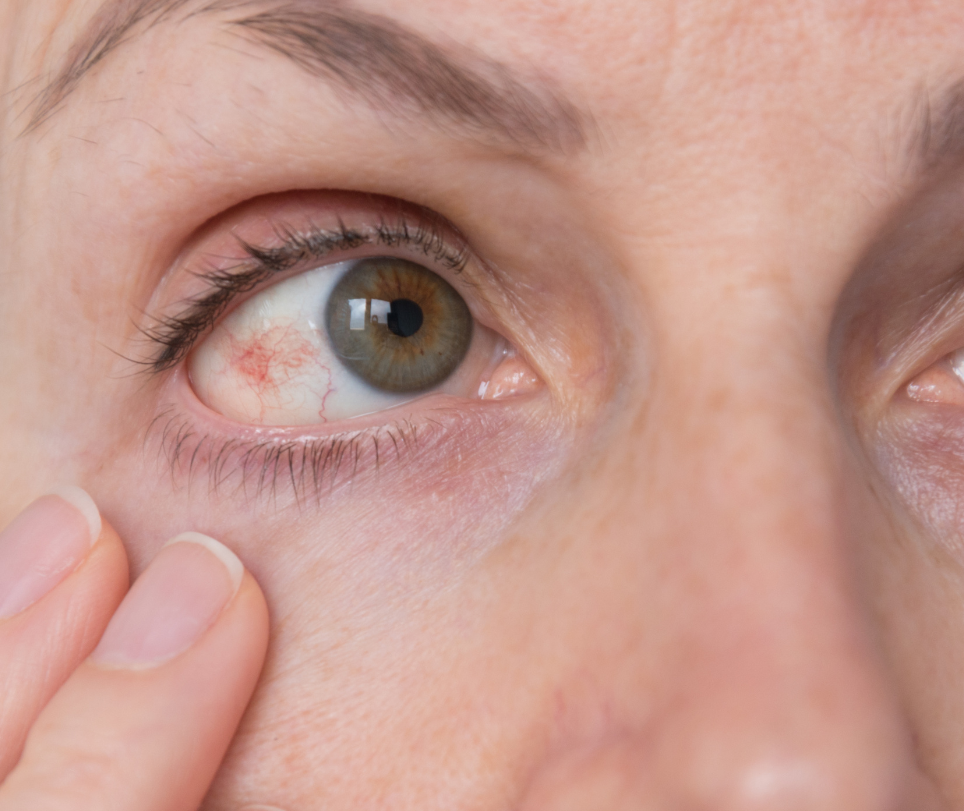The eye has its own pressure, which does not depend on blood pressure. In some cases, intraocular pressure can rise, compromising the functionality of the optic nerve and causing a pathology known as glaucoma.
What is meant by eye pressure
Eye pressure is the pressure resulting from the balance between the secretion of aqueous humor, a liquid produced inside the eye by a part of the ciliary body (located behind the iris), and its outflow from the eye that occurs through a structure called the trabecular system.
Maintaining eye pressure, also called Ocular Tone, is important for optimal vision.
In fact, the pressure in the eyes favors the maintenance of the shape of the eyeball and protects it from certain deformations.
Definition of ocular hypertension or high eye pressure
High eye pressure, medically defined as ocular hypertension (IOP), is determined by the speed at which the liquid inside the eye, called aqueous humor, is produced and reabsorbed (source Wikipedia).
If the aqueous humor is drained too slowly from the eye, the normal balance between production and drainage is interrupted and eye pressure increases.
How eye pressure is measured
Eye pressure is measured with an instrument called a tonometer. It can be contact or puff and expresses the measurement in millimeters of mercury (mmHg).
The measurement of intraocular pressure can be performed at different times of the day to monitor any changes.
The optic nerves are checked to verify the possible presence of damage or abnormalities. For further control of pressure data, pachymetry can also be used, an examination that measures the thickness of the cornea.
Values of eye pressure
The pressure in the eyes, optimal for correct vision, should remain within the values between 10 and 20 mmHg.
Low eye pressure
Eye pressure is considered low when it is less than 12 mmHg. Causes of low eye pressure Low eye pressure is rarer and can occur following complications due to surgery. With an eye pressure below 10 mmHG, the patient’s vision begins to decrease and it is therefore necessary to intervene immediately.
Transient high eye pressure. When?
High eye pressure can be transient in case of flu with cough, vomiting, heavy physical exercise, excessive consumption of alcohol or caffeine. There may also be cases of high eye pressure in season changes or in the morning. However, these are transient and non-alarming changes.
What determines high eye pressure
The causes of high eye pressure are as follows:
- Age over 40.
- Hereditary factors.
- Some drugs, particularly corticosteroids.
- An eye trauma, for example an injury to the eye that can alter the balance of fluid drainage.
- Eye diseases such as pseudoexfoliation syndrome.
- Insufficient fluid drainage.
- Stress.
- Complicated pregnancies with sudden pressure changes.
- Smoking.
- Diabetes or heart disease.
What are the symptoms of high eye pressure?
Often high eye pressure is an asymptomatic disorder.
There are no external signals such as red eyes or pain.
After years of high pressure, however, the sensation is of having a sort of fog in front of the eyes and a difficulty in focusing things and environments.
To monitor eye pressure, it is essential to undergo a complete eye examination performed by a vision professional.
What to do in case of high eye pressure?
In case of high intraocular pressure, it is necessary to undergo regular checks to avoid the onset of eye diseases such as glaucoma or retinoblastoma, one of the most frequent tumors in childhood.
High eye pressure and glaucoma
It is important to underline that an increase in endo-ocular pressure is not synonymous with glaucoma.
High intraocular pressure can cause the onset of eye diseases such as glaucoma, which if not adequately treated, can lead to a gradual reduction in the visual field.

